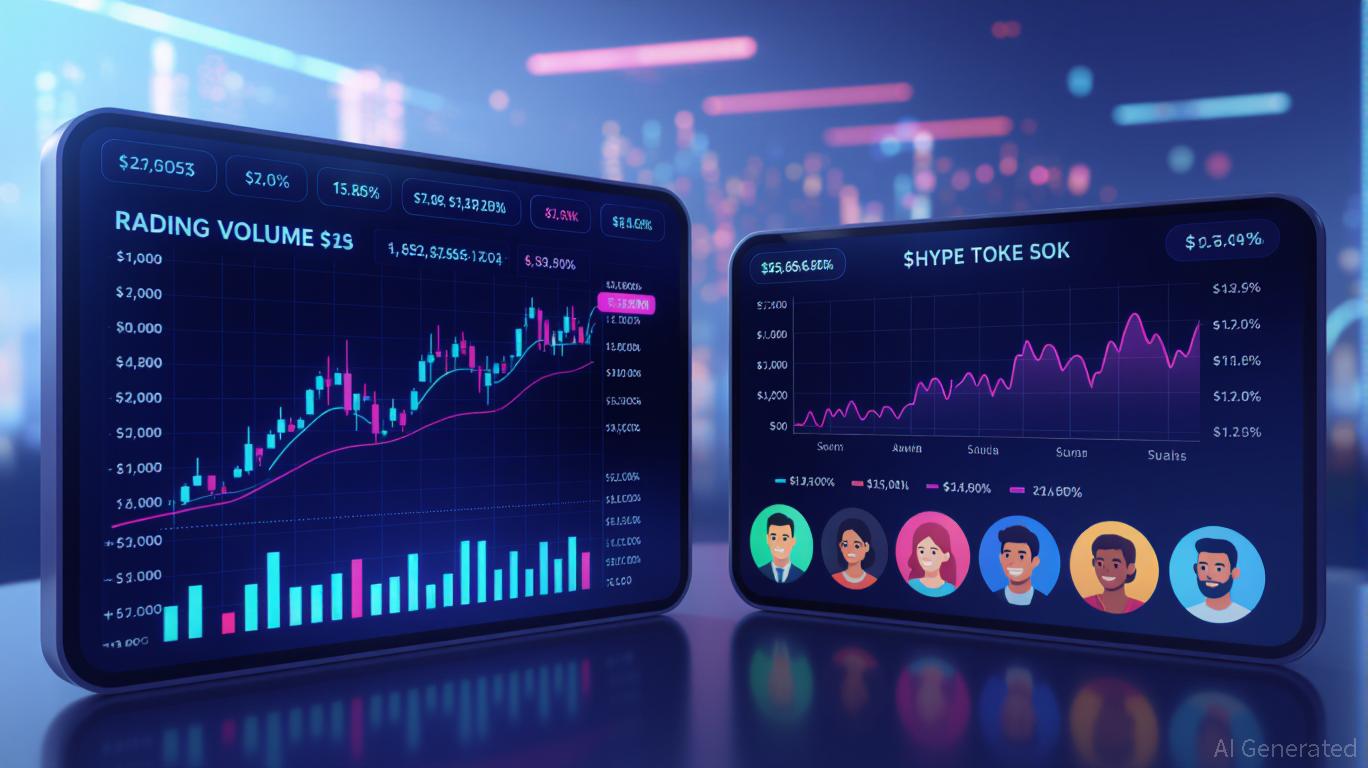Hyperliquid's Recent Rise in Attention from Retail Investors: The Impact of Retail-Fueled Liquidity on the Evolution of DeFi Trading Patterns
- Hyperliquid's retail-driven growth, fueled by token airdrops and buybacks, boosted 2025 trading volume to $320B and protocol revenue to $86.6M. - The platform's 6.1% global derivatives market share and $2.15B TVL highlight its impact on DeFi liquidity and institutional adoption. - Challenges include regulatory scrutiny and a 11.2% institutional market share decline due to tokenomics issues like a $10.8B HYPE unlock over two years.
Retail User Growth: A Catalyst for DeFi Innovation
Since its debut in 2023, Hyperliquid’s retail user numbers have soared, propelled by decentralized token allocation and incentive-based features.
The Assistance Fund, introduced in January 2025, further boosted retail participation by dedicating 97% of trading fees to buying $HYPE. This buyback approach has

Liquidity Metrics and Institutional Adoption
Hyperliquid’s liquidity statistics highlight its expanding role in DeFi. By 2025, the platform’s Total Value Locked (TVL) reached $2.15 billion,
Liquidity provided by retail users has also improved market efficiency. Hyperliquid’s adaptive funding rates, which automatically recalibrate to balance long and short positions, enhance capital utilization for traders. The platform’s integration with trusted price oracles such as
Challenges and Regulatory Considerations
Despite Hyperliquid’s remarkable growth, caution is warranted for investors. The platform’s hybrid approach—merging DeFi openness with the speed of centralized exchanges—faces regulatory scrutiny, especially under new frameworks like the EU’s Markets in Crypto-Assets (MiCA). Institutions have responded by implementing liquidity stress tests and adopting diversified strategies, including covered calls and cash-secured puts, to manage risk. Additionally, smart contract audits and multi-signature wallets are increasingly standard to address counterparty and asset security issues.
Conclusion
Hyperliquid’s rise in retail participation demonstrates how decentralized platforms can leverage user-driven liquidity to challenge conventional trading models. By aligning token economics with user rewards and utilizing advanced infrastructure, the platform has reshaped DeFi liquidity. However, continued success will depend on regulatory compliance and sustainable tokenomics.
Disclaimer: The content of this article solely reflects the author's opinion and does not represent the platform in any capacity. This article is not intended to serve as a reference for making investment decisions.
You may also like
BlackRock's IBIT offloads $463M in Bitcoin, largest outflow on record

HBAR Trades Near Support as ETF Listings Expand and EV2 Presale Gains Attention

Bitcoin News Update: Regulatory Approval Fuels OPTER's Surge Similar to XRP
- - 2025 crypto market speculation highlights BTC/DOGE as blue-chip staples and OPTER as a potential XRP-style breakout. - - OPTER's $0.10 presale and hybrid model (buy vs earn tokens) draws parallels to XRP's 2017 surge from $0.02 to $3. - - U.S. regulators (IRS/SEC) ease crypto compliance by allowing ETP staking and approving ETF listing standards. - - Decentralized perpetuals market hit $58.5T volume in 2024, with Opter competing against HyperLiquid/GMX in high-risk/high-reward space. - - Analysts proje

Fed Faces Rate Decision Challenges: Incomplete Data Deepens Policy Disagreements
- U.S. government shutdown disrupted key economic data, delaying Fed's rate decision amid inflation and employment uncertainty. - Fed officials split: Collins and Bostic oppose December rate cuts due to persistent inflation, contrasting with Miran's growth-focused stance. - Market uncertainty rises as CME FedWatch shows 68% chance of 25-basis-point cut, with financial stocks reflecting volatility. - Shutdown reduced Q4 GDP by 1.5pp, while delayed data risks flawed policy decisions and impacts consumer borr
